spaceplane
Latest
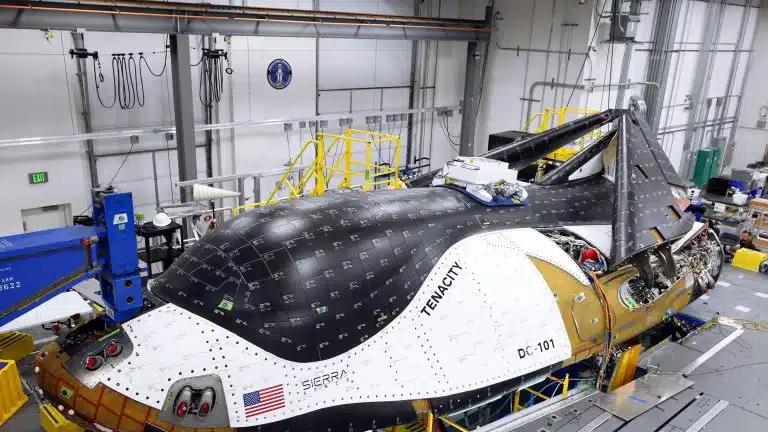
A commercial spaceplane capable of orbital flight is ready for NASA testing
NASA will soon start testing what's dubbed as the world’s first commercial spaceplane capable of orbital flight. All going well, Sierra Space’s Dream Chaser will make it first supply run to the International Space Station in April.
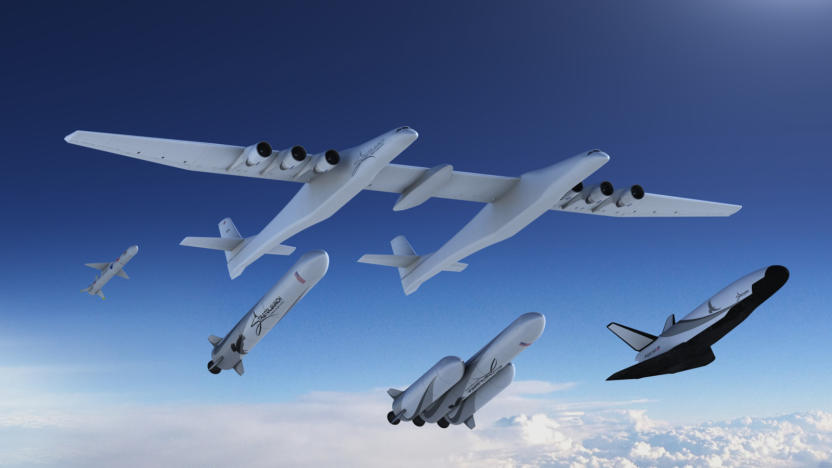
Stratolaunch's new satellite carriers include a reusable space plane
Paul Allen's Stratolaunch is only just starting to make serious progress on its massive aircraft, but it's already thinking about its future beyond that enormous machine. The company has unveiled a new family of launch vehicles that can carry a wide range of payloads to orbit. Most notably, it's in the "design study" phase for a completely reusable space plane (shown at far right). Stratolaunch won't even predict when the machine would be ready, but it would initially focus on cargo launches and carry crew in later revisions.
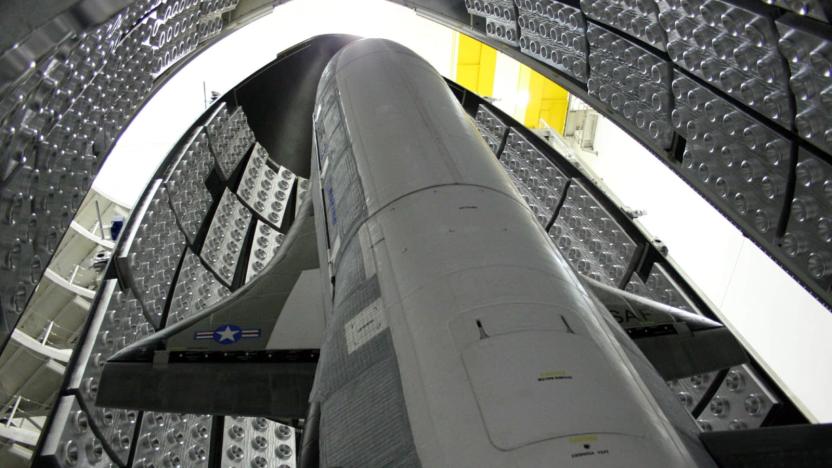
SpaceX will launch a secretive space drone for the Air Force
SpaceX fought hard for the right to launch Air Force projects and it has landed a pretty prestigious one. Elon Musk's company will fire the X-37B miniature spaceplane into orbit with the Falcon 9, taking over from the reliable Atlas V built by United Launch Alliance, according to Reuters. And here's the kicker: It will launch the space shuttle-like drone in just two months, meaning it will be SpaceX's first mission for the Air Force.
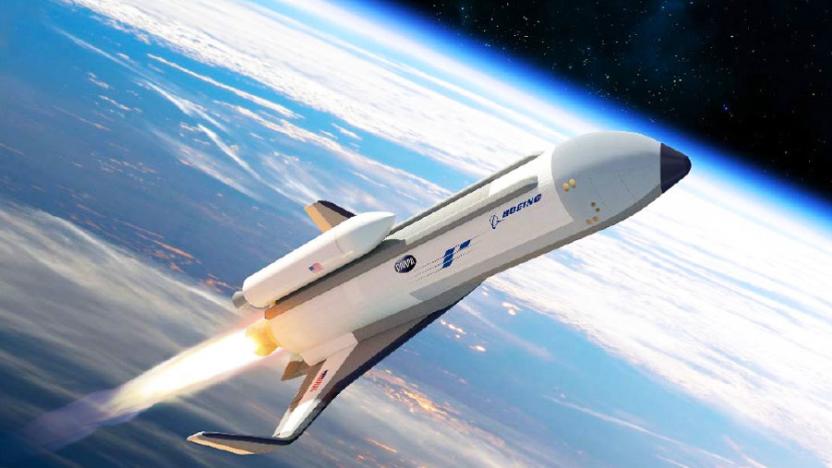
Boeing is building DARPA's new hypersonic space plane
A few years ago, DARPA started work on a new experimental aircraft project called the XS-1, a vehicle designed to make launching satellites a faster, less expensive endeavor. Today, that project just took a huge leap forward: DARPA has announced that it's partnering with Boeing to build its next generation hypersonic space plane. Specifically, the aircraft manufacturer has been tapped to complete advanced design work on the XS-1 project, following up on the concept Boeing pitched to the agency during the project's early stages -- which it will now help build and test over the next several years.

Can microwave-powered shuttles make space travel cheaper?
How much does it take to launch a satellite? According to Rocket Lab's Peter Beck "You pretty much have to write a check for a billion dollars." Beck, along with Jeff Bezos and Elon Musk are part of a new wave of inventors looking to make this cheaper by developing low cost or reusable rockets for launches. The folks at Escape Dynamics, however, have a very different idea about how to make trips to space economical for people who aren't multi-millionaires. The company claims that it's successfully tested the engine for a reusable spaceplane that, rather than being stuffed to the gills with expensive fuel, would glide into the stratosphere on a wave of microwave energy.
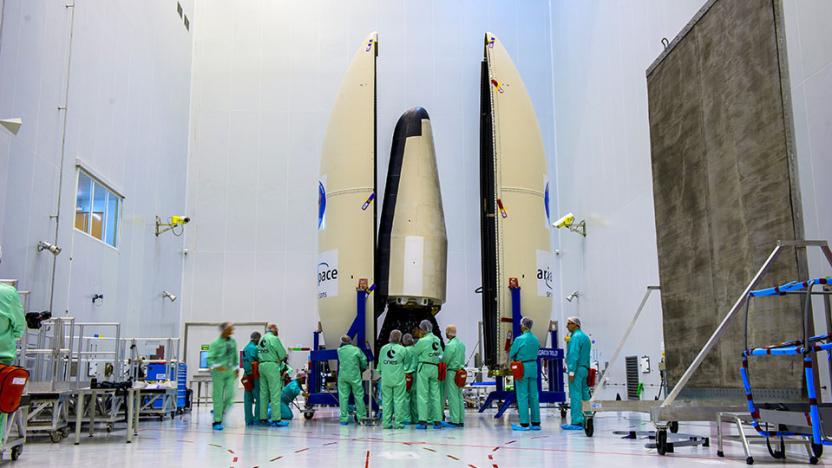
Watch the ESA launch its reusable spaceplane (update: success!)
The European Space Agency (ESA) does a fine job of launching rockets into orbit (usually), but is more clueless than its US and Russian counterparts about how to bring them back safely. That lack of savoir-faire is the reason the launch of the IXV experimental spaceplane schedule for 8AM ET today. During the one hour, forty minute mission, a Vega rocket will launch the 16-foot long, 2 ton "lifting body" spacecraft to a height of 280 miles. From there, it'll begin a rapid descent with flaps and thrusters controlling its trajectory. It'll have to re-enter at precisely the right angle to avoid burning up or missing its target, a recovery ship some 3,000 km west of the Galapagos islands.

DARPA's XS-1 program aims for an unmanned spaceship with aircraft-like costs
The reusable spacecraft we've seen so far haven't really lived up to their billing: vehicles like the Space Shuttle or SpaceShipTwo require elaborate, expensive launches. If DARPA succeeds with its just-announced XS-1 program, however, spaceflight could be an affordable, everyday occurrence. The agency plans to develop an unmanned spacecraft that requires a minimal ground crew, reaches speeds above Mach 10 and flies at least 10 times in as many days. Provided DARPA meets its goals, XS-1 would both speed up the deployment of small satellites and lower the cost per flight to an "aircraft-like" $5 million or less. Don't count on seeing a ship in action anytime soon, though. DARPA will only receive some of the first design proposals on October 7th, and someone still has to build the winning project -- it will likely be years before XS-1 slips the surly bonds of Earth.

Britain throws another £60 million at the Skylon spaceplane, hopes mid-life crisis is over soon
After a series of successful tests on the Skylon spaceplane's SABRE engine, the UK government has decided to invest another £60 million to continue developing it. The scramjet-based tech could pave the way for cheaper space travel, since it carries little oxygen on board and can maneuver like an airplane before rockets kick it into orbit. Earlier, a key component that chills air from 1,830 to minus 302 degrees Fahrenheit in 1/100th of a second passed its trials with flying colors. That means the project team can move to the next phase: building and ground testing a prototype SABRE engine. Though billions of pounds more would be needed to eventually develop a Skylon vehicle, a European Space Agency spokesman thinks it would be worth it, saying "we have something here that is really unique." Let's hope they can match recent scramjet success stateside and avoid the whole crashing part.

X-37B finally touches down, completing its not-so-secret classified mission (video)
After more than a year of circling the globe, the US Air Force's X-37B has finally touched down at Vandenberg Air Force Base in California. The unmanned, reusable space plane spent 469 days in orbit, performing a number of experiments (many of which are classified) before finally ending its lengthy run Saturday. What exactly the military has learned from the extended orbital excursion is unclear, but, like the Mars rovers before it, the X-37B turned out to be far more robust than many had anticipated. Its mission was originally intended to last just nine months, but its operators managed to milk about six more months out of the craft. While we wait to find out what the next step is, enjoy the video of it landing after the break.

Happy Biiiirthday Mr. USAF X-37B Robot Space Plane
The X-37B was only meant to stay up in space for a gestational nine months, but a full year has now passed since launch and the US Air Force apparently has little interest in bringing its baby home. On the contrary: according to Space.com, the plan is to send up another unmanned space plane to keep the X-37B company on its [CLASSIFIED] missions. Whatever it's getting up to in that airless playground, it must be doing something right. Air Force Lt. Col. Tom McIntyre says the craft is "setting the standard for a reusable space plane and, on this one-year orbital milestone, has returned great value on the experimental investment." Which is a fine way of saying [STILL CLASSIFIED].

X-37B spaceplane back on earth after 7 months of spying on us, shooting aliens
Look, we don't know what the Air Force sent the unmanned X-37B into space for, or why they didn't offer us a ride, but we're pretty sure whatever it was it was awesome. The spaceplane is now back on solid ground, and apparently it completed all of its orbital objectives during its seven month trip, which were supposedly mostly diagnostic self-tests. According to The Man, anyway. Still, we could swear we spotted some laser blast holes and a self-satisfied, Tom Cruisian smirk on the X-37B when it thought nobody was looking, which confirms all of our worst suspicions: there is extraterrestrial life, and it's totally badass, and only highly trained space fighter jockeys can save us.







